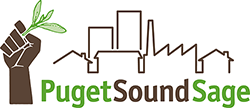Securing Sound Transit Surplus Property for Community Ownership
The construction of Link light rail in Southeast Seattle brought the gifts of transit connections and the burdens of gentrification and displacement that often accompany ill-planned public investments in low-income communities of color. If we had the chance to do it again, how would we do it differently?
With the implementation of Sound Transit 3 we have that opportunity and South CORE - over 21 organizations in the Rainier Valley creating a collective vision for community controlled and inspired development - have lessons to share about what went wrong and how to expand our regional transit system while maximizing equitable transit oriented development.
-
-
- We know that public investments in major infrastructure like light rail increase the values of surrounding property fueling rent hikes and speculative real estate transactions.
- We know that when low-income residents and people of color who are transit dependent are displaced from transit rich areas to transit poor areas, ‘global’ transit ridership decreases. When higher income residents move in, they tend to drive more, decreasing ‘local,’ mode-specific ridership.
- We know that housing is one piece of the affordability puzzle and that to make our region truly equitable we need good jobs and robust services.
- We know that households that are most impacted by displacement have the solutions to our region’s displacement and affordability crises. When transit dependent low-income residents and communities of color lead in decision making, these communities stand to benefit from regional growth.
- We believe that development without displacement is possible through community self-determination and stewardship of land.
-
South CORE calls on Sound Transit to ensure inclusive and equitable communities throughout the region by:
Incentivizing equitable development in the selection of proposals for surplus property:
-
-
-
-
- Proposals with clear community stewardship and accountability measures, where the communities most impacted by displacement will benefit directly. The agency should prioritize proposals where land will be owned by community, developed in partnership with nonprofit housing developers.
- Proposals that maximize affordability: deepest affordability for households earning $36,000 or less and creative ways to keep commercial affordable.
- Proposals that ensure the creation of high-road jobs in hotels, service, retail, child/elder care, and food industry careers.
- Proposals that include services like healthcare, childcare, and other public services.
- Proposals that preserve cultural/ community institutions, like religious institutions, businesses, and gathering spaces.
- Proposals that utilize priority hiring to for the construction of the site.
-
-
-
In order to facilitate the standards listed above, Sound Transit must:
-
-
-
-
- Sell land for reduced price or give away for free.
- Redefine ‘developable’ to include creative development strategies.
- Acquire developable parcels around proposed light rail stations to maximize equitable development.
-
-
-
Sound Transit must engage with impacted communities in all agency policies and practices:
-
-
- For surplus properties, Sound Transit should facilitate a process where residents of station area and other local stakeholders who are most impacted by displacement define priorities for developments on that land. Specifically, the following groups should make decisions about the types of developments that happen on Sound Transit land: renters, LGBTQ residents, communities of color, low-income residents, youth, small business owners, residents with disabilities, transit dependent populations, elders, and people experiencing houselessness.
-
We must incentivize community controlled, equitable development around transit.
By 2035, we will have a more connected region with 37 new light rail stations approved by voters in 2016. There are 37 new opportunities to get equitable transit communities right as Sound Transit rail service expands regionally. All of these gains are at risk if we don’t proactively prevent displacement as the system expands and Sound Transit is one piece of the equitable transit communities puzzle.
